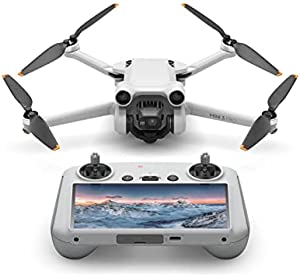If you're a pet parent, it's important to provide your furry friend with the best possible nutrition. With so many options available on the market, choosing between dry food and freeze-dried snacks can be overwhelming. In this article, we'll explore the pros and cons of both options, compare them, and provide tips to help you make an informed decision about what's best for your pet.

What is Dry Food?

Dry food, also known as kibble, is a popular feeding option for pets. It's made by cooking ingredients at high temperatures and then removing the moisture, resulting in a crunchy texture. Here are some things to consider when it comes to dry food:
Pros
- Can be convenient and easy to store
- Comes in a variety of flavors and formulas to meet your pet's needs
- Can be more affordable than other options
Cons
- May contain low-quality ingredients or fillers
- Can be high in carbohydrates and low in moisture, which may not be ideal for some pets
- Can spoil if not stored properly or used within a certain timeframe
What Are Freeze-Dried Snacks?

Freeze-dried snacks are a newer option on the market that have gained popularity in recent years. They are made by freezing raw ingredients and then slowly dehydrating them, which helps to retain their nutritional value. Here's what you need to know about freeze-dried snacks:
Pros
- Often made with high-quality ingredients
- Retain more nutrients and flavor because they're not cooked at high temperatures
- Lightweight and convenient for travel or use as training treats
Cons
- Can be more expensive than other options
- May not provide a complete and balanced diet on their own
- Can be difficult to find in some stores or online retailers
Who Can Benefit from Dry Food?

Dry food can be a good option for pets who:
- Are not picky eaters and will eat a variety of flavors and formulas
- Don't have any specific health concerns that require a specialized diet
- Have access to plenty of fresh water throughout the day
Who Can Benefit from Freeze-Dried Snacks?
Freeze-dried snacks may be a better choice for pets who:
- Are picky eaters and need something extra special to entice them to eat
- Need a higher protein or lower carbohydrate diet
- Have digestive issues or allergies that require a limited ingredient diet
When Should You Use Dry Food?
Dry food can be used in a variety of situations, such as:
- As a daily meal for your pet
- As a supplement or treat in addition to other types of food
- When convenience is a top priority
When Should You Use Freeze-Dried Snacks?
Freeze-dried snacks are best used in these situations:
- As a training reward for good behavior
- As a snack between meals or when on-the-go
- As a topper or mix-in with other types of food to add flavor and nutrition
How to Choose Between Dry Food and Freeze-Dried Snacks
When it comes to choosing between dry food and freeze-dried snacks, there are a few things to consider:
- Your pet's health needs: Does your pet have any specific health conditions that require a certain type of diet?
- Your budget: How much are you willing to spend on your pet's food?
- Your lifestyle: How important is convenience to you?
- Your pet's preferences: Does your pet have any favorite flavors or textures?
Based on these factors, you can make an informed decision about which option is best for your furry friend.
Alternatives to Dry Food and Freeze-Dried Snacks
If neither dry food nor freeze-dried snacks seem like the right choice for your pet, there are other options to consider:
- Wet food: Provides more moisture and can be easier to digest for some pets
- Homemade meals: Allows you to have complete control over the ingredients and nutrition in your pet's food
- Raw food: Mimics a more natural diet for pets and may provide added health benefits
Step-by-Step Guide to Choosing Pet Food
Here's a step-by-step guide to help you choose the best food for your pet:
- Talk to your veterinarian about any specific health needs or concerns your pet has.
- Research different types of pet food and their pros and cons.
- Consider your budget and lifestyle when making a decision.
- Choose a few options that meet your criteria and try them out with your pet.
- Monitor your pet's health and behavior to ensure the food is working well for them.
Compare Dry Food and Freeze-Dried Snacks
Here's a comparison table to help you compare dry food and freeze-dried snacks:
| Criteria | Dry Food | Freeze-Dried Snacks |
|---|---|---|
| Processing method | Cooked at high temperatures and moisture removed | Raw ingredients frozen and slowly dehydrated |
| Texture | Crunchy | Chewy or crispy |
| Nutritional value | May contain fillers, low-quality ingredients, and be high in carbohydrates | Retains more nutrients and flavor |
| Convenience | Easy to store and often more affordable | Lightweight and convenient for travel or use as training treats |
| Special considerations | May not provide complete and balanced nutrition on its own | Can be more expensive than other options |
Tips for Feeding Your Pet
Here are some additional tips to help you feed your pet the best possible diet:
- Read ingredient labels carefully and choose high-quality options.
- Avoid foods with artificial colors, flavors, and preservatives.
- Monitor your pet's weight and adjust their food intake accordingly.
- Use portion control to prevent overfeeding.
- Provide plenty of fresh water throughout the day.
The Best Option for Your Pet: It Depends
When it comes down to it, there is no one-size-fits-all answer to the question of whether dry food or freeze-dried snacks are better for your pet. Each option has its pros and cons, and what works for one pet may not work for another. The key is to assess your pet's individual needs and preferences, and choose a food that provides them with the right balance of nutrition and enjoyment.
FAQs
- Is dry food bad for my pet? Dry food isn't necessarily bad for pets, but it can contain low-quality ingredients or fillers that aren't ideal for their health. It's important to read ingredient labels carefully and choose high-quality options whenever possible.
- Can I feed my pet only freeze-dried snacks? While freeze-dried snacks can be a nutritious addition to your pet's diet, they may not provide a complete and balanced meal on their own. It's important to choose a food that meets all of your pet's nutritional needs.
- How much should I feed my pet? The amount of food your pet needs will depend on their size, age, and activity level. It's important to follow the feeding guidelines on the food packaging and adjust as needed based on your individual pet's needs.
- Can I mix dry food and freeze-dried snacks together? Yes, you can mix different types of food together to provide your pet with added variety and nutrition. Just be sure to monitor your pet's overall intake to prevent overfeeding.
- Are there any risks associated with raw or homemade diets? Raw and homemade diets can pose some risks if they are not properly balanced and prepared. It's important to consult with a veterinarian or veterinary nutritionist before starting your pet on any new type of diet.
Conclusion
Choosing between dry food and freeze-dried snacks can be a tough decision for pet parents. Both options have their pros and cons, and what works for one pet may not work for another. The key is to assess your pet's individual needs and preferences, and choose a food that provides them with the right balance of nutrition and enjoyment. With the tips and information in this article, you'll be better equipped to make an informed decision about what's best for your furry friend.


